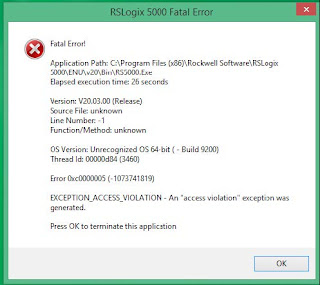Analog Circuits: Voltage 0-10VDC, Current Source and Current Loop 4-20mA
What is an analog circuit? A discrete signal is simply an ON/OFF signal such as toggling a light switch and an analog signal is infinitely variable in theory between two points. A simple example of an analog device would be a dimmer switch that is used to raise and lower the brightness of a light.
Types of analog circuits - The two most popular types of analog circuits are voltage and current. Voltage signals are usually ±5 V, ±10 V, or 0 V to 5 V, and 0 V to 10 V. Current signals are usually 4 to 20 mA or 0 to 20 mA.
Analog Voltage Circuits 0-10 VDC - Analog voltage circuits are the simplest as they are easiest to connect and troubleshoot. However they are not suited for most industrial environments where they may run beside motor circuits, solenoids, and other forms of electrical interference.
Analog Current Circuits 4-20 mA - A 4-20mA signal is an analog signal that regulates a current loop to transmit a value from point A to point B. That is the simplest definition I can come up with however even it needs broken down a little more.
- Analog - A discrete signal is simply an ON/OFF signal such as toggling a light switch. An analog signal is infinitely variable in theory between two points. A simple example of an analog device would be a dimmer switch that is used to raise and lower the brightness of a light.
- Current - The amount of electricity passing from point A to point B. Almost all other signals you will work with on industrial systems are based off of voltage or the potential electrical difference between two points. Make sure read Ohm's Law Power Formulas and Pie Chart to help you understand the terms power, voltage, current, resistance, and how they are associated.
- Range - 4-20
- Low 4mA - Unlike many analog signals, a 4-20mA signal's low end does not start at 0. This is called having a "Live Zero" and allows the device receiving the signal to determine the difference between a "0" signal and a faulty signal such as a failed transmitter or a broken wire.
- High 20mA - There are many reasons the industry may have settled on 20mA but as for a general understanding it is a good compromise maximum transmission length (lower mA = less voltage drop) and having power available power for loop powered devices to consume on typical industrial power sources such as 10VDC and 24VDC.
Types of 4-20mA analog circuits
There are two major categories of analog circuits. Loop Powered and Current Source.
Loop Powered - Loop powered are also called 2 wire circuits and are usually identifiable because the analog devices only have two wires attached to them.
In loop powered analog circuits the analog devices are powered by the current loop. It has the advantage of simplicity and the analog devices' low power consumption many times means they carry hazardous area approvals such as Intrinsically Safe (I.S.) and Non-incendive (N.I.) which allows them to be used in explosion proof environments.
However despite their simplicity, much confusion still exist about how to properly connect these circuits and troubleshoot them. Power must be connected from the positive of your power supply to the positive of your first analog device in the loop. Then connect the negative of that device to the positive of the next device, continuing to do this until the last device where you will connect the negative of that device to the negative of your power supply to complete the loop. This is very confusing in text format so pay close attention to the "+" and "-" signs in the image to the right.
Also note that the order of analog devices in the loop does not affect the functionality of the loop. Also you can have multiple devices reading the same analog device simply by adding them to the loop. However remember that every device consumes some power and adds impedance to the network which will eventually increase the circuit resistance to the point that it cannot drive a 20mA signal.
Current Source - Where the loop powered circuit requires an external power supply to be wired in the loop, a current source or 4 wire circuit creates its own "source" of power for the 4-20mA loop. It will be externally powered and may be powered by any voltage and either AC or DC such as 24VDC, 110VAC, 220VAC, 480VAC, etc. 4 wire analog transmitters will usually have additional features that can make them more versatile than their 2 wire counterparts such as specific analog scaling or scaling based of off a different set of units than the default. They are also capable of having features beyond that of analog such as relays to close a dry contact at a specific analog signal, connection to an automation network, etc.
While 4 wire analog devices seem like the clear winner, they cost more, will usually not have any type of hazardous classification for explosion proof environments, are not suitable for many harsh environments, and require individually isolated analog inputs which many more economical PLCs lack.
Examples of 4-20mA analog devices - While the list of analog devices are as infinite as the signals they create, here are a few examples.
- Flow
- pH
- ORP
- Level
- Pressure
- Temperature
- Decibel
- Turbidity
- Vibration
- Speed
- Distance or length
Measuring a 4-20ma Input With a Voltage Input Device - While most PLCs are available with both voltage and current inputs options, many of your lower end PLCs will have built in 0-10VDC analog inputs. I highly recommend you get the proper input for your analog device, but this is a very good exercise in how to use Ohms law to convert one unit measurement to another. By connecting a 250 ohm resistor across a voltage input, a 4-20mA signal is converted to a 1-5VDC signal. Here's how:
Ohms law: R=V/I where V is the Voltage, I is the current and R is the resistance.
4-20mA = 1-5VDC. We want 5VDC to equal 0.020mA so if we plug that into ohms law R=5V/0.020mA=250 ohms. Then we need to calculate the voltage at 4mA using our 250 ohm resistor. Rearranging our ohms law formula, V=R*I or 250 ohm*0.004mA = 1V
Why not use 2-10VDC? Using our ohms law equation, if we wanted 10VDC to equal 0.020mA then it would be R=10V/0.020mA= 500ohms. This is another common resistor so why not use it? 4-20mA transmitters have a maximum impedance which lots of times is as low as 500 ohms so the device can't regulate a current through a resistance that is greater than it's maximum impedance.




Comments
Post a Comment